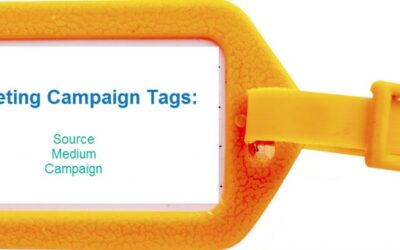When products work together our lives are much easier! A lot of good things happen for you when you link your Google Accounts, especially AdWords and Analytics. Let’s take a look at a few more advantages.
The last post introduced the idea of Linking AdWords and Analytics, this post provides more benefits.
Distinguish Between Good and Bad Traffic
Google Analytics can send valuable engagement data to AdWords so you can more easily distinguish between good and bad traffic. You’ll see data like:
- Bounce rates — are people clicking your advertisements only to leave right after hitting the landing page?
- Pages per session — are people looking at multiple pages once they get to your website?
- Time on site
- Percentage of new sessions
Do a More Thorough Analysis of Your AdWords Campaign Performance
When your accounts are linked, AdWords sends important data to Google Analytics so you can do a thorough analysis of your ads’ performance without toggling back to Google AdWords to gather data like:
- Cost of your AdWords by campaign, ad group, keyword, etc.
- Clicks you’re getting on your ads, keywords, etc.
- Keyword performance
- Sitelinks performance (new)
See What Happens After Ad Readers Land on Your Website
When web surfers click on the links in your AdWords advertisements, you typically send them to a page on your website. What happens after these AdWords visitors land on your site (engagement, bounce rate, conversions, etc.) is a mystery, unless AdWords data is transferred to Analytics.
One of my customers was thrilled that their AdWords manager was getting them hundreds of clicks each week… That is until I linked their Google Analytics and AdWords accounts and showed them that their AdWords traffic had a bounce rate[1] of close to 100%.
On a positive note the Google Analytics data identified where the problem was and we were able to fix it quickly.
Target Your Ads to People Who Are Already Interested
Have you ever noticed that after you’ve visited certain websites you start seeing their ads on other websites you visit? The technique that makes that happen is called remarketing. Remarketing is a compelling way of getting people back to your website “for another look”.
When you link your Google Analytics and AdWords accounts you can pass target audience data from Google Analytics to AdWords, so AdWords delivers advertisements to those specific target audiences. To set up remarketing campaigns, you just have to define your target “audiences” in Google Analytics. Examples might include; “all visitors”, “visitors to specific groups of pages”, visitors who took a specific action (watched a video, downloaded a file), etc.
Identify Issues with Landing Pages, Ads and Bounce Rates
When I have AdWords campaigns with high clicks and low conversions, I often turn to Google Analytics data to identify issues with landing pages, missed ad expectations, and of course bounce rates. I can get better data and make decisions more accurately and quickly because I don’t have to toggle between Analytics and AdWords.
How to Link Your AdWords and Google Analytics Accounts
So now that you know “why” you should link your Google AdWords and Google Analytics accounts, you’re probably wondering “how” to do it. It’s really quick and simple:
- From your Google Analytics account, click Admin in the top navigation menu. Three columns will open.
- In the middle column where it says “Product Linking”, Click AdWords Linking.
- Select the Google Analytics view you wish to link and then click Save.
Your accounts will be linked in no time and you’ll be on your way to making better business and marketing decisions.
[1] Bounce Rate: The percentage of people who leave your website after looking at only one page. A low bounce rate is good because it is an indication that people are engaging. A high bounce is a sign of disengagement.
This post is an excerpt of an article first published on Linked In Pulse.





